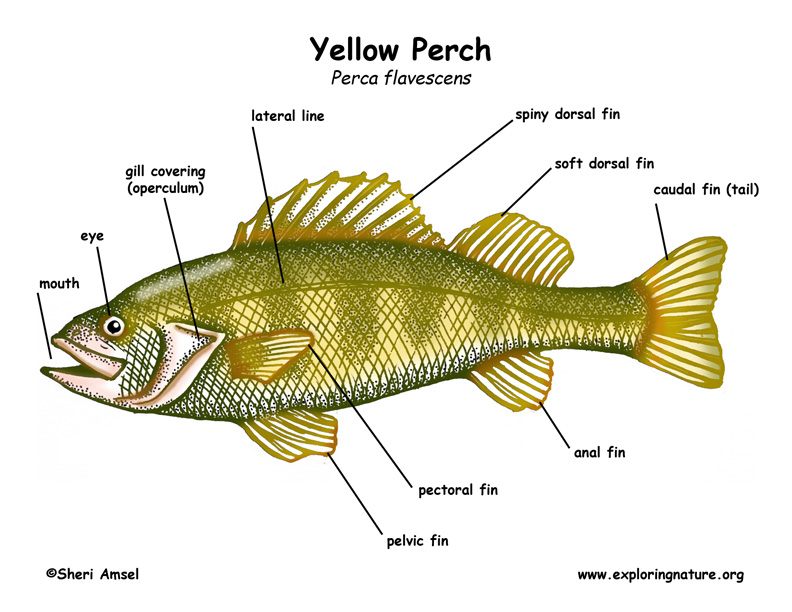

They are found from central Canada down through the eastern half of the United States north of Georgia.
They live in clear lakes, ponds and large rivers.
They are yellow with darker bars up and down across their sides. They have sharp spines on their dorsal fin, making them a tricky fish to catch and de-hook. Females are larger than males reaching up to a foot long.
They live in schools during active daylight hours (and especially when they are young) to help protect themselves from predators. They are important prey for many other fish.
They eat water insects and small fish, swallowing them whole.
Females lay more than 20,000 eggs in the early spring in shallow, sandy or gravely spawning grounds. The males follow and fertilize the eggs. The eggs hatch in a little over 2 weeks.
Kingdom: Animalia
Phylum: Chordata
Subphylum: Vertebrata
Class: Actinopterygii
Order: Perciformes
Suborder: Percoidei
Family: Percidae
Genus: Perca
Species: flavescens
When you research information you must cite the reference. Citing for websites is different from citing from books, magazines and periodicals. The style of citing shown here is from the MLA Style Citations (Modern Language Association).
When citing a WEBSITE the general format is as follows.
Author Last Name, First Name(s). "Title: Subtitle of Part of Web Page, if appropriate." Title: Subtitle: Section of Page if appropriate. Sponsoring/Publishing Agency, If Given. Additional significant descriptive information. Date of Electronic Publication or other Date, such as Last Updated. Day Month Year of access < URL >.
Amsel, Sheri. "Perch (Yellow)" Exploring Nature Educational Resource ©2005-2024. December 13, 2024
< http://exploringnature.org/db/view/598 >

